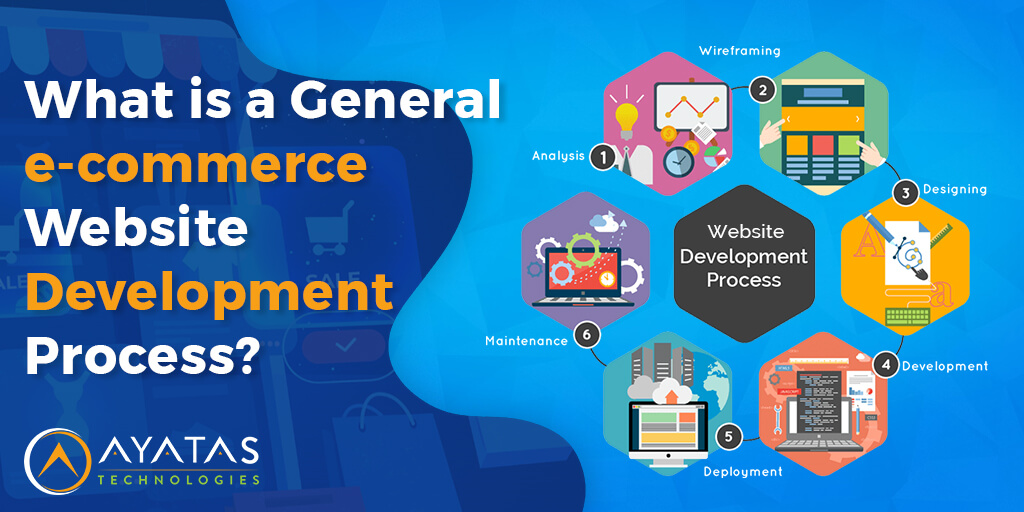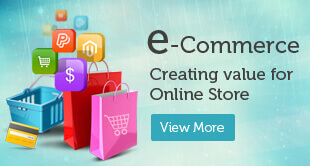
What Is A General eCommerce Website Development Process?
With over 24 million eCommerce stores today, the number of people shopping online is increasing daily as it is convenient to buy required goods from anywhere. If your business has a physical store, you should also consider building an online store to increase your business and generate more revenue from your eCommerce business. The development of an online store could be confusing if you do not know where and how to start the process. Using eCommerce development platforms like WooCommerce, Wix, BigCommerce, and others reduce the budget and timelines of building an online store. If you are a business owner looking to start an online store, then you need to know about the eCommerce website development process. If you need a customized and more professional online store, you need to hire an eCommerce web development services company.
What Are eCommerce Sites?
An eCommerce website is an online site that allows to buy or sell products or services online. All eCommerce websites are designed to allow users to search for the products or services of their choice from their homes using their computers, laptops, or android phones. Online stores can be broadly divided into two types.
Vendor-Specific: These are the most common eCommerce websites where the company or individual is the only seller of products or services on the site. The company promotes its brand and also further promotes the products using SEO and digital marketing techniques.
Multi-vendor: Online marketing giants like Amazon, eBay, and Alibaba are examples of multi-vendor eCommerce stores. In multi-vendor sites, the individual or company creates an eCommerce store and offers 3rd party people to sell products and services on the website.
What is eCommerce Web Development?
Ecommerce web development is the process of building an online store where customers have the option to buy or sell products. The primary objective of any online store is to generate revenue that can be made into reality with the help of an experienced eCommerce website developer. To make the eCommerce site more functional, each developer has to see all the navigational buttons, hyperlinks, and call-to-action buttons that make navigation of the site much easier.
Steps For General eCommerce Website Development Process
Building an eCommerce store is not easy; it is necessary to know about the business and understand the market you will deal with at the time. Here are some of the steps that are to be followed to make your work much easier.
1. Get A Eye Catching Name
Before starting your online business, selecting an eye-catching name for your online store is important. Do not go with the competitor’s name, and you need to stand out in the competition, so choose a name that would be attractive to the customers. The name you select should be unique, and it would also be helpful for you in choosing the domain name as the name is unique.
2. Purchase Domain Name
Once you have decided on your online store name, it is time for you to purchase the domain name for your company. As a lot can change on the web very quickly, it is suggested that you register your domain name, or another company might register your name, making it difficult for you to get the required domain.
3. Know What You Are Selling
The first and most important to decide is the products or services you are interested in selling online. Before even deciding on the product, you have to decide on the market you will concentrate on and always have an eye on the new products or trends launching on the internet daily. After getting knowledge of the product and market, it is time to concentrate on competitors. Finding a niche with a bit more space for breathing can give you a chance for survival and never enter into the space with heavy players and high budgets. As a new player, you must enter a space with a novel approach, unique branding, and a better user experience. Providing a website can stand a better chance for you against the competition.
4. Determine the Type of eCommerce Model
There are several business models available, but for eCommerce sites, there are two main categories B2B (Business to Business) and B2C (Business to Consumer).
B2B or Business to Business: As the name suggests, the product transaction is done between two businesses. A manufacturing company sells its products to other companies which need the product, and in the general case, B2B transactions are done within the same industries.
B2C or Business to Consumer: Most eCommerce stores come under this category. Companies sell their products or services to consumers without the involvement of any third party.
5. Know Your Target Audience
One of the main advantages of online business is that you have a clear idea about your target audience and market. Even though you have full knowledge of your target customers, it is important to understand them better to have more financial benefits for your company. For the potential customers in your market, all the products must be tailored, so understanding the nature, background, income range, and age can be more beneficial for your company to build a stronger connection with them.
6. Choose The Platform
Once you have chosen the domain name and other important things, it is time to choose the right platform for developing and building your website. Some options available are Shopify, Wix, WooComemrce, Magento, Squarespace, and many more.
7. Pick a Template and Customize the Template
All the platforms used for building your online store have templates or themes that help make your site more appealing. Most of the eCommerce platforms give you the option to build the site on your own, but a little bit of coding is also required. While choosing a platform, you need to check for
- Appealing features available in the theme
- Style of the theme and is it suitable for your store
- Does the template have smooth navigation or not
After you have chosen the right template, it is time to customize the theme. In customization, you can change. In customization, you can modify anything using the admin panel user name and password.
- Text Color, Font, and Size
- Images
- Position of the product
- Color of the theme
8. Adding The Products
Once the theme customization is completed, it is time to add products to your site. On every theme, there is a button available that guides you in the process of addition of products, and all the details of products can be added in this section. While adding the products, the description related to products is very important to grab the consumer’s attention. While adding the images for products, make sure that the images are high-quality and should be optimized so that the site speed does not go down.
Things to Remember while adding descriptions, images, and details of products
For Description
- Do not write lengthy sentences.
- The description should be SEO optimized to get an added advantage
- Do not use technical jargon which might confuse the customer
For Adding Product Images
- Images should not be blurry but should be of high-quality
- The size of every image added should be the same
- The image should be visible from all angles
- Images should be optimized so that the speed of the site does not slow down.
- Every image should have a Zoom button so that the details can be seen easily.
9. Build a Great and Easy Check-out Process
Once you have started to sell goods online, there might be transactions other than cash on delivery options. People are now choosing to pay by credit cards or other payment options available on your site. The payment option depends on the region and industry you are dealing with, and try to include the most popular payment options. After the payment option is completed, it is time for shipping options. People are looking for flexible shipping options, and some might be interested in picking up the product from a local store. Your eCommerce store should be able to provide various shipping options for the customers so that the customer himself chooses the best one.
10. Other Key Features to Lookout for
Here are some of the key features that are to be included in your eCommerce website
Responsive Design: As all the online shopping is completed on mobiles, your website needs to be responsive to give a better experience for users
Content Management System: For your online store, CMS can be used to update dynamic content like blogs, content in design, and adding news.
Payment Processing: Payment functionality needs to be updated on your site to accept a wide range of payments from Apple pay, PayPal, Stripe, etc.
Product Management: Product management is useful in keeping track of all inventory, and at the same time, you should be able to offer multiple versions of the product at a time.
Hire A Professional eCommerce Development Company
In the pandemic, eCommerce has opened gates for new opportunities for those who want to make their presence in the digital world. For developing an eCommerce store, it is crucial to choose the right platform and an experienced developer who can guide you through the process of making a successful online store for your business. At Ayatas Technologies, we have a strong team of eCommerce experts specialized in Magento, WooCommerce, Shopify, and other solutions to empower your brand. If you are a business owner looking to build an online store for your company, you need to talk to our eCommerce experts. Contact us at (916) 836-8099 for more details.



